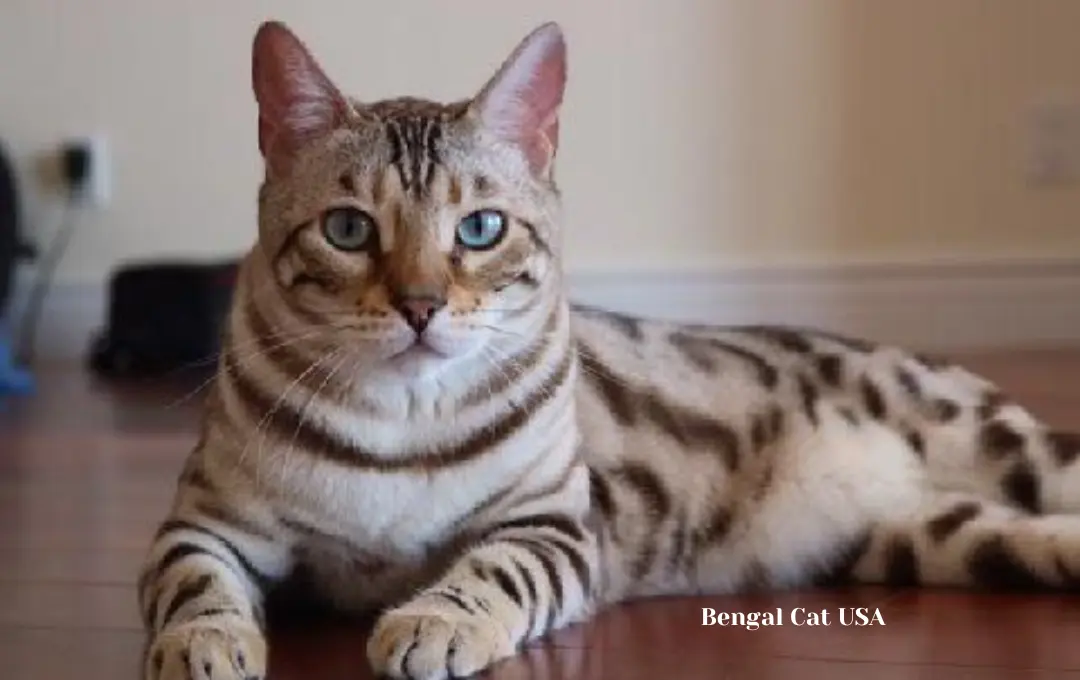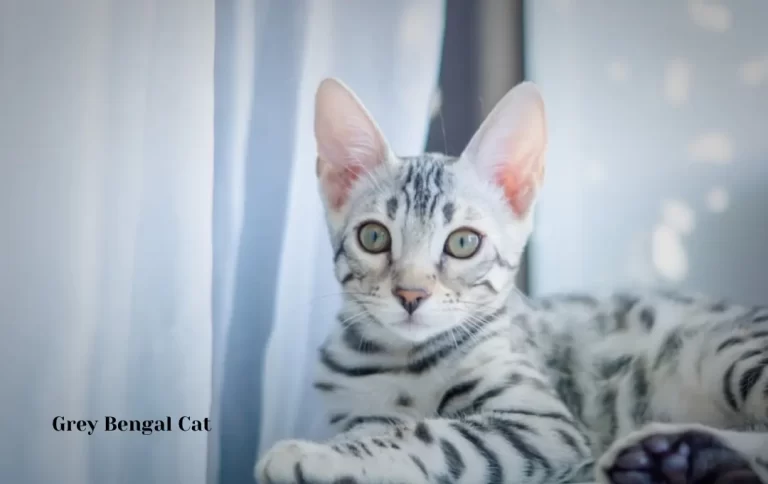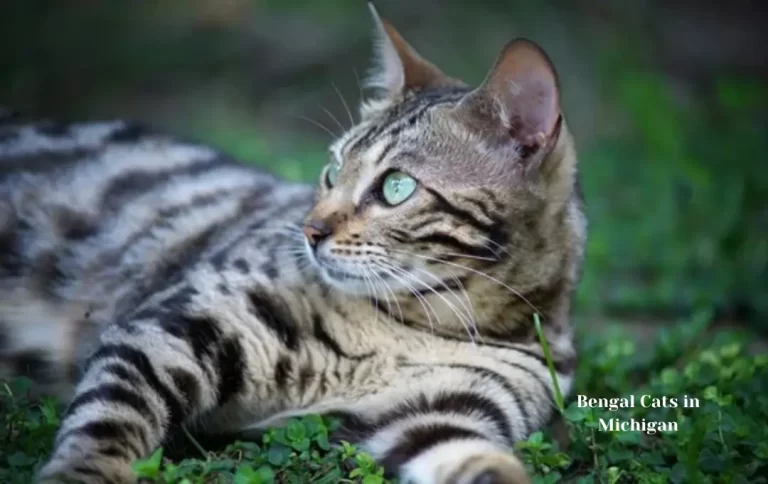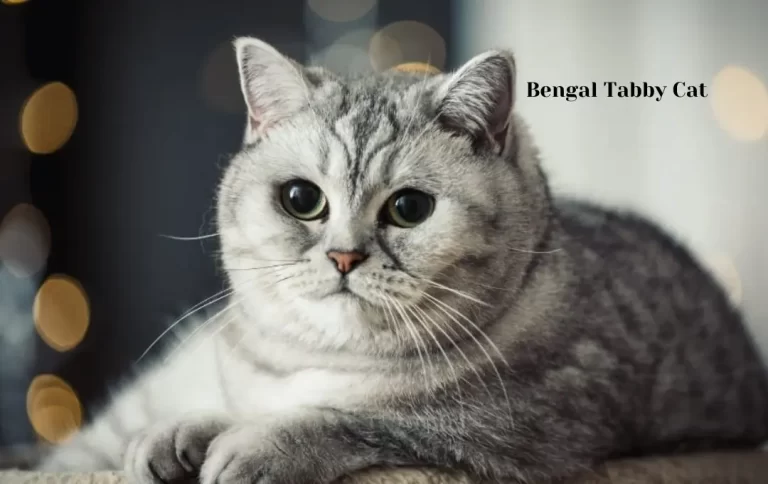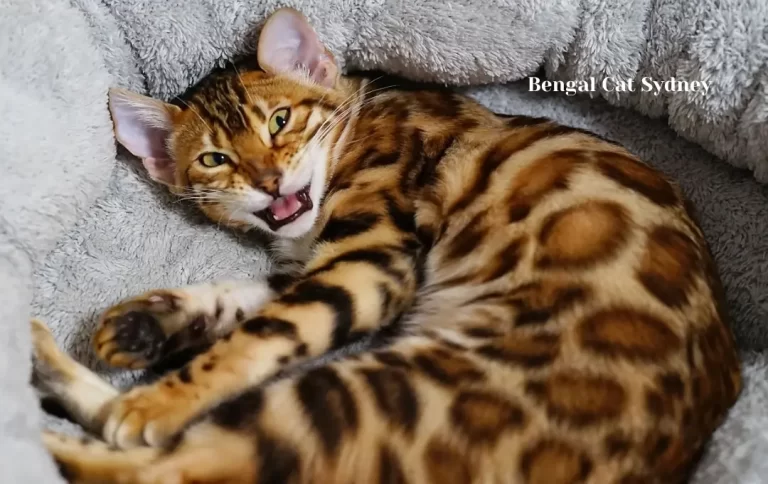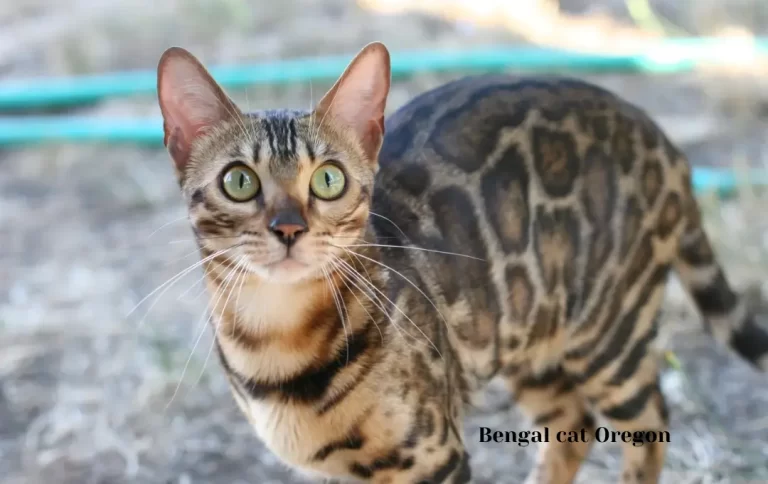Economical Bengal Cat Price USA | Updated Guide for 2023
The pet-owning industry is large and varied, and different breeds each have their own special appeal. The Bengal cat is one breed that has received a lot of media attention. Bengal cats have gained popularity among cat enthusiasts in the US thanks to their wild appearance and energetic nature. But along with their distinctive qualities come a variety of pricing that can make potential purchasers unsure or even worried.
In this section, we’ll embark on a journey to explore the factors that influence Bengal cat price USA. From understanding the breed’s origins to unraveling the intricacies of cost determination, we’ll shed light on the fascinating world of Bengal cat pricing and help you make an informed decision about bringing one of these enchanting felines into your home.
The Appeal of Bengal Cats as Pets
Bengal cats have an undeniable charm that sets them apart as captivating and engaging companions. In this section, we’ll delve into the unique qualities that make Bengal cats a popular choice among pet owners in the USA.
Exotic Aesthetics: The mesmerizing coat patterns of Bengal cats evoke the wild beauty of their leopard ancestors, making them a living work of art that draws attention wherever they go.
Playful Nature: Bengals are renowned for their energetic and playful personalities. Their high levels of activity and curiosity create an interactive and entertaining environment for their owners.
Intelligence: These cats are exceptionally smart, often learning tricks and adapting to games quickly. Their intelligence adds an element of surprise and mental stimulation to the owner-pet relationship.
Social Bonds: Bengal cats can form strong bonds with their human companions. Many enjoy being part of the household activities and seek interaction with family members.
Dog-Like Traits: Bengal cats are known for their dog-like behaviors, such as fetching, following their owners around, and even learning to walk on a leash.
Vocal Expressiveness: With a wide range of vocalizations, Bengal cats express their needs and emotions, effectively communicating with their owners.
Low Grooming Needs: While their coat might seem high-maintenance, Bengal cats require less grooming than some other long-haired breeds. Their short coat is easier to manage and sheds less.
Adventurous Spirit: These cats have a natural curiosity and love exploring their surroundings. Providing them with stimulating environments keeps their minds engaged.
Family-Friendly: Due to their interactive nature, Bengal cats can be great companions for families, including children and other pets, fostering a sense of companionship.
Pride in Ownership: Owning a Bengal cat is not just having a pet; it’s having a conversation piece and a lifelong friend that brings joy and fascination to your life.
Factors Influencing Bengal Cat Price USA
The Bengal cat price USA can vary significantly based on a multitude of factors that impact their pricing. In this section, we’ll explore the key elements that breeders and sellers take into account when determining the price of these exquisite feline companions.

How much does a Bengal cat cost in the US?
A Bengal kitten costs between $1,500 to $2,500. The average tends to be about $2,000. However, prices can range from as low as $800 to as high as $10,000 or more
Breeder Reputation: Established and reputable breeders often command higher prices due to their commitment to breeding healthy and well-socialized cats.
Pedigree and Lineage: Cats with prestigious pedigrees, showcasing a history of show-winning or champion lineage, tend to have higher price tags.
Coat Quality and Patterns: Bengal cats with rare and visually striking coat patterns, such as rosettes or marbling, are valued more highly.
Color Variations: Unusual and sought-after color variations, like snow Bengals or charcoal Bengals, can increase the cat’s market value.
Gender and Age: Female Bengal cats are generally priced higher than males due to their potential for breeding. Kittens are usually more expensive than older cats.
Availability and Demand: Limited availability and high demand for Bengal cats can drive up prices, especially for certain coat colors or patterns.
Health and Vaccination Status: Cats with up-to-date vaccinations, health certifications, and genetic testing for hereditary conditions often come with a premium price.
Registration and Papers: Cats with official registration papers from recognized cat breed associations command higher prices as they guarantee the cat’s pedigree.
Show Potential: Cats with features that align with breed standards and potential for success in cat shows can have higher prices due to their rarity.
Geographical Location: Bengal cat prices can vary based on the region within the USA, influenced by local demand, cost of living, and breeder concentration.
Breeder Overhead Costs: Breeders consider costs related to cat care, medical expenses, and raising kittens when setting prices.
Training and Socialization: Cats that have been trained or socialized extensively may be priced higher due to the additional effort invested.
Guarantees and Support: Breeders offering health guarantees, post-purchase support, and advice may reflect these services in the price.
Ethical Breeding Practices: Breeders adhering to ethical breeding standards, including responsible breeding to avoid health issues, might reflect these practices in pricing.
Market Trends: Supply and demand fluctuations within the cat market can influence pricing dynamics.
Average Cost of Bengal Cats
The cost of Bengal cats in the USA can vary widely based on several factors. While prices can range significantly, having an idea of the average cost can help potential buyers set realistic expectations. In this section, we’ll explore the typical price range for Bengal cats and what factors contribute to these variations.
Pet Quality Bengals: On average, pet-quality Bengal kittens can range from $800 to $2,500. These cats are typically sold as companions and are not intended for breeding or showing purposes.
Show Quality Bengals: Show quality Bengal kittens, which possess features closely aligned with breed standards, can start around $2,500 and go upwards of $5,000 or more.
Breeder Reputability: Reputable breeders who prioritize health, socialization, and responsible breeding practices often charge higher prices to cover their investments in quality care.
Coat Patterns and Colors: Unusual coat patterns, such as rosettes or marbling, and rare colors like snow Bengals, can lead to price increases due to their unique aesthetics.
Geographical Variations: Bengal cat prices can vary significantly depending on the region within the USA. Urban areas with higher living costs may have higher cat prices.
Gender: Female Bengal cats are generally priced higher due to their potential for breeding.
Age: Bengal kittens are typically more expensive than adult cats due to their potential for longer companionship and bonding time.
Health and Vaccination Status: Cats with up-to-date vaccinations, health certificates, and genetic testing may be priced higher due to their improved overall health.
Registration Papers: Cats with official registration papers from recognized cat breed associations may have a higher cost, as these papers verify their pedigree.
Additional Services: Breeders who provide spaying/neutering, microchipping, and initial supplies may factor these services into the price.
It’s important to remember that while the upfront cost of purchasing a Bengal cat is a significant factor, ongoing expenses such as food, veterinary care, toys, and other supplies should also be budgeted for. Buyers should do their research, inquire about the cat’s lineage and health history, and ensure that the breeder is reputable before making a purchase. By understanding the average cost range and the factors influencing prices, potential Bengal cat owners can make an informed decision that aligns with their preferences and budget.
Bengal Cat Breeders and Pricing Trends
Bengal cat breeding is a dynamic industry that sees changes in fashion and cost over time. In this part, we’ll examine the function of breeders and how Bengal cat community pricing trends may affect the price of these furry friends.
Breeder Reputation and Expertise:
Established breeders with a history of producing healthy and high-quality Bengal cats often command higher prices due to their reputation. Breeders with a deep understanding of the breed’s genetics, behaviors, and health considerations are more likely to produce cats with desirable traits.
Breeder Ethics and Practices:
Ethical breeders prioritize the health and well-being of their cats over profit, resulting in higher initial costs due to quality care and responsible breeding practices. Unscrupulous breeders may cut corners to lower costs, potentially compromising the health and genetic integrity of their cats.
Supply and Demand Dynamics:
Fluctuations in supply and demand for Bengal cats can impact pricing trends. A surge in demand or a scarcity of available kittens can lead to price increases.
Rare Coat Patterns and Colors:
Breeders specializing in rare coat patterns or colors may charge premium prices due to the uniqueness and scarcity of these traits.
Show and Breeding Potential:
Bengal cats with exceptional show or breeding potential, meeting strict breed standards, are often priced higher to cater to breeders and show enthusiasts.
Market Influences:
Economic factors, lifestyle changes, and cultural trends can influence pricing trends as people’s willingness to invest in high-priced pets may change over time.
Marketing Strategies:
Breeders who invest in effective marketing, showcasing their cats’ unique attributes and personalities, may be able to command higher prices.
Health and Genetic Testing:
Breeders that invest in comprehensive health testing and genetic screening may reflect these efforts in slightly higher prices to cover the cost of responsible breeding practices.
Competition Among Breeders:
Intense competition among breeders can lead to pricing adjustments as they strive to attract potential buyers with competitive offers.
Breed Association Recognition:
Breeders who have cats recognized by prominent cat breed associations might set higher prices due to the official recognition and pedigree verification.
The Cost of Owning a Bengal Cat
Bringing a Bengal cat into your home involves more than just the initial purchase price. It’s important to consider the ongoing costs associated with their care and well-being. In this section, we’ll break down the various expenses you should anticipate when owning a Bengal cat in the USA.
Initial Purchase Price: The upfront cost of purchasing a Bengal cat, can vary based on factors such as breed quality, lineage, and breeder reputation.
Veterinary Care:
Routine Check-ups: Regular veterinary visits for vaccinations, wellness exams, and preventive care.
Emergency Care: Unexpected health issues or accidents that require immediate attention and treatment.
Food and Nutrition:
High-Quality Food: Providing a balanced and nutritious diet to support their overall health and vitality.
Treats and Supplements: Additional food items or supplements to promote well-being.
Litter and Litter Accessories:
Litter Box: Invest in a suitable litter box and accessories for a clean and comfortable environment.
Litter: Regular supply of litter for hygiene and odor control.
Grooming and Hygiene:
Brushes and Combs: Tools for maintaining their coat’s health and appearance.
Nail Trimming: Regular nail trims to prevent overgrowth and discomfort.
Toys and Enrichment:
Toys: Providing toys and enrichment activities to keep them mentally and physically stimulated.
Scratching Posts: Essential for maintaining their claws and satisfying their natural scratching instincts.
Bedding and Comfort:
Bed or Blanket: Creating a cozy spot where your Bengal cat can rest comfortably.
Pet Insurance:
Health Coverage: Opting for pet insurance to help offset unexpected veterinary costs.
Wellness Plans: Some insurance plans also cover routine wellness visits and preventive care.
Microchipping and Identification:
Microchip: Have your Bengal cat microchipped for identification and safety purposes.
Spaying/Neutering:
Surgery: If your Bengal cat isn’t already spayed or neutered, this is an essential procedure to consider.
Boarding or Pet Sitting:
Travel: Expenses for boarding or hiring a pet sitter when you’re away from home.
Training and Behavioral Needs:
Training Aids: If you’re training your Bengal cat in specific behaviors, you might invest in tools or resources.
Cleaning Supplies:
Cleaning Products: Regular cleaning products to maintain a clean living space for both you and your cat.
Pet-Friendly Furniture:
Scratching Posts/Furniture: Invest in pet-friendly furniture and scratching posts to prevent damage to your belongings.
Considering these ongoing expenses is essential to ensure that you’re fully prepared for the responsibilities of Bengal cat ownership. Budgeting for both expected and unexpected costs can help provide your Bengal cat with a happy and comfortable life while also maintaining your financial well-being.
Adoption vs. Purchase: Pros and Cons
You have the choice to either buy from a breeder or adopt from a shelter or rescue group when thinking about bringing a Bengal cat into your home. Each option has its own benefits and disadvantages. We’ll look at the benefits and drawbacks of adopting and buying Bengal cats in the USA in this section.

Adoption:
Pros:
Saving a Life: By adopting from a shelter or rescue, you’re giving a loving home to a cat in need and potentially saving a life.
Lower Cost: Adoption fees are generally lower than the purchase price from a breeder.
Variety of Ages: Shelters often have cats of various ages, allowing you to choose a cat that fits your lifestyle.
Healthcare: Many shelter cats are spayed/neutered, vaccinated, and microchipped before adoption.
Mature Personalities: Older cats have more established personalities, making it easier to find a cat that matches your preferences.
Cons:
Limited Breed Knowledge: Shelters may not have purebred Bengal cats, and breed characteristics might vary in mixed-breed cats.
Potential Health Issues: Some shelter cats may have health concerns that require ongoing care and attention.
Breed-Specific Traits: If you’re specifically looking for Bengal cat traits, they might be less predictable in shelter cats.
Purchase from a Breeder:
Pros:
Predictable Traits: Reputable breeders offer cats with predictable breed-specific traits, ensuring you get a cat that aligns with your expectations.
Health Assurance: Reputable breeders prioritize the health and well-being of their cats through proper breeding practices.
Pedigree Verification: Kittens from breeders often come with pedigree papers and official recognition from breed associations.
Show and Breeding Potential: If you’re interested in showing or breeding, a reputable breeder can provide cats with the right attributes.
Cons:
Higher Cost: Purchasing from a breeder is generally more expensive than adopting from a shelter.
Potential for Unethical Practices: Some breeders may prioritize profit over animal welfare, leading to health issues in the cats they produce.
Wait Time: Reputable breeders may have waiting lists, requiring you to wait for the right kitten to become available.
Less Variety in Ages: Breeders often have kittens available, which might not be suitable if you’re looking for an older cat.
Hidden Costs to Consider
When bringing a Bengal cat into your home, it’s important to anticipate not only the obvious expenses but also the hidden costs that can arise over time. Here are some hidden costs to consider as part of your decision-making process:
Emergency Veterinary Care: Unexpected health issues can arise, leading to emergency vet visits and treatments that can be expensive.
Health Insurance: Investing in pet health insurance can help offset the cost of unexpected medical bills, surgeries, and treatments.
Behavioral Training: Some Bengal cats may require behavioral training or consultations with experts to address specific issues.
Dietary Needs: Certain cats might have dietary sensitivities or preferences that require specialized foods, which can be more expensive.
Allergies: If you or someone in your household develops allergies to the cat, you might need to invest in air purifiers or other solutions.
Destructive Behavior: Bengal cats are known for their active nature. They might engage in behaviors that damage furniture or belongings, necessitating replacements or repairs.
Travel Expenses: If you need to travel, you might need to arrange for pet care, boarding, or pet sitters, which come with additional costs.
Cat-Proofing: Bengal cats are curious and active. You might need to invest in cat-proofing your home to ensure their safety and prevent potential damage.
Furniture and Household Items: Bengal cats might scratch furniture, leading to potential replacements or repairs.
Specialized Accessories: Bengals may benefit from interactive toys, scratching posts, and other accessories that cater to their active nature.
Regular Grooming: While Bengal cats have short coats, they might still require regular grooming, including nail trims and ear cleaning.
Routine Check-ups: Regular veterinary visits for vaccinations, wellness exams, and preventive care.
Pet Deposits or Fees: If you’re renting your home, there might be additional deposits or fees associated with having a pet.
Local Regulations: Depending on where you live, there might be local regulations or fees related to pet ownership.
Loss of Time: Caring for a pet takes time, including feeding, playtime, grooming, and litter box maintenance.
It’s essential to factor these hidden costs into your budget and planning to ensure that you’re fully prepared for the responsibilities of Bengal cat ownership. While these costs might not be immediately obvious, being proactive about budgeting for them can help provide your Bengal cat with the best possible care and ensure a fulfilling and harmonious relationship between you and your feline companion.
Regional Variations in Bengal Cat Prices
The cost of Bengal cats can vary significantly based on the region within the USA. Local factors such as demand, cost of living, breeder concentration, and regional preferences can influence the pricing dynamics. In this section, we’ll explore how Bengal cat prices might differ across different regions.
East Coast:
Higher Prices:
Urban Demand: Metropolitan areas along the East Coast often have higher living costs, leading to increased prices for pets.
Trend Influences: Trend-setting cities may have a higher demand for unique and exotic pets like Bengal cats.
Breeder Concentration: Regions with more established and reputable breeders might offer cats at a premium due to their reputation.
Lower Prices:
Rural Areas: In less urbanized regions, the cost of living is generally lower, potentially leading to more affordable prices.
Economic Factors: Economic fluctuations in certain areas can impact the disposable income available for purchasing pets.
West Coast:
Higher Prices:
Urban Centers: Major West Coast cities often have higher costs of living, leading to higher pet prices.
Trend Setting: Similar to the East Coast, areas with a trend-setting culture may have a higher demand for unique pets.
Lower Prices:
Suburban Areas: Suburbs and smaller towns may offer Bengal cats at more affordable prices due to the lower cost of living.
Competition: If there’s healthy competition among breeders, it could lead to competitive pricing.
Midwest:
Higher Prices:
Breeder Concentration: Areas with established and reputable breeders might command higher prices.
Demand in Urban Centers: Major cities within the Midwest may have a higher demand for unique pets.
Lower Prices:
Rural Regions: Less urbanized areas with a lower cost of living could offer Bengal cats at lower prices.
Economic Factors: Economic conditions might influence pricing, with less disposable income affecting demand.
Southern States:
Higher Prices:
Urban Demand: Larger cities in the South could see higher prices due to urban demand.
Climate Considerations: In some cases, certain coat colors (like snow Bengals) might be more popular in warmer climates, leading to higher prices.
Lower Prices:
Smaller Towns: Less populated areas in the South may offer more affordable prices.
Economic Variation: Economic conditions can vary within the region, impacting pet ownership affordability.
It’s important to remember that these are general trends and that pricing can be influenced by a variety of factors. Regardless of the region, thorough research into breeders’ reputations, the health and well-being of the cats, and adherence to responsible breeding practices is crucial. By understanding the regional variations in Bengal cat prices, you can better plan and budget for the cost of bringing a Bengal cat into your home.
Tips for Finding a Reputable Bengal Cat Breeder
Finding a reputable Bengal cat breeder is crucial to ensure that you’re getting a healthy and well-socialized feline companion. Here are some tips to help you identify trustworthy breeders:
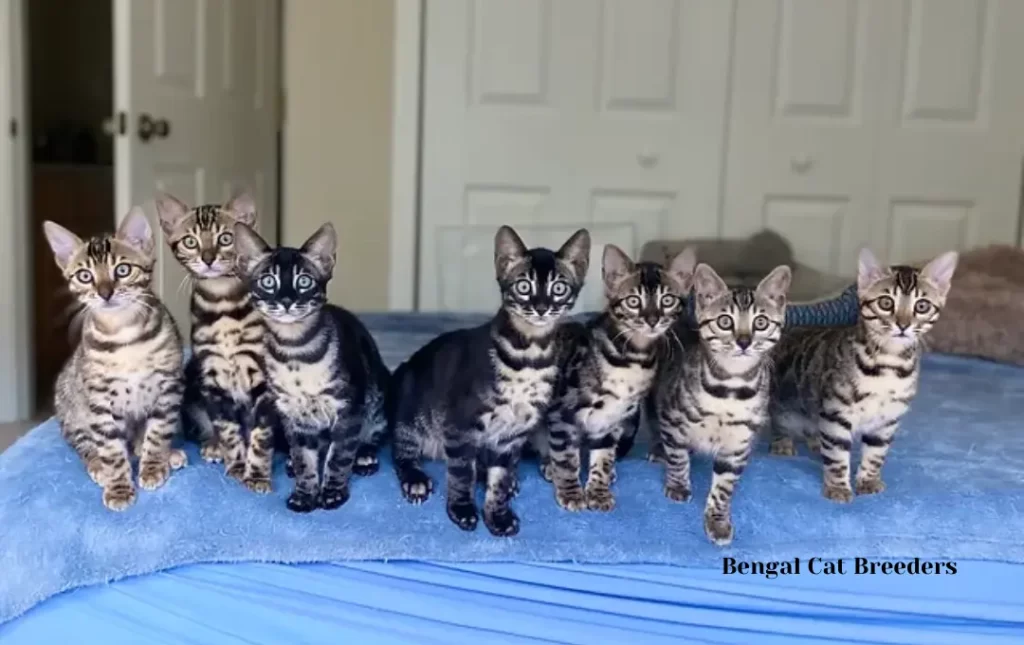
Research Extensively: Take the time to research Bengal cat breeders thoroughly. Look for breeders with a strong online presence, including a website and active social media profiles.
Breed Associations: Reputable breeders often belong to recognized cat breed associations, such as The International Cat Association (TICA) or the Cat Fanciers’ Association (CFA).
Ask for References: Request references from previous buyers. Reach out to them to inquire about their experience with the breeder and their Bengal cat.
Visit the Breeder: If possible, visit the breeder’s facility in person. This allows you to assess the living conditions of the cats and the overall cleanliness of the environment.
Ask Questions: Prepare a list of questions to ask the breeder. Inquire about their breeding practices, health testing, socialization efforts, and how they care for their cats.
Health Guarantees: Reputable breeders offer health guarantees for their cats. Make sure you understand the terms of the guarantee and what it covers.
Genetic Testing: Inquire about the breeder’s genetic testing practices. Responsible breeders perform genetic testing to minimize the risk of hereditary health issues.
Socialization: A reputable breeder will prioritize the socialization of their kittens. Ask about the efforts they make to ensure their cats are well-adjusted and friendly.
Contract: Review the purchase contract carefully. It should outline the responsibilities of both the buyer and the breeder.
Transparent Pricing: Transparent breeders provide clear pricing information and explain what is included in the price.
No Pressure: Avoid breeders who pressure you into making a quick decision. Reputable breeders want to ensure their cats are going to suitable homes.
Breeder Knowledge: A reputable breeder will have extensive knowledge about Bengal cats, their traits, behaviors, and care requirements.
Online Reviews: Look for online reviews and testimonials from previous buyers. Positive reviews can be a good indicator of a reputable breeder.
Avoid Red Flags: Be cautious of breeders who have multiple litters available at the same time, are unwilling to provide references, lack transparency, or have unsanitary living conditions.
Ethical Practices: Reputable breeders prioritize the welfare of their cats and adhere to ethical breeding practices.
Remember that purchasing from a reputable breeder not only ensures you’re getting a healthy and well-bred Bengal cat but also supports responsible breeding practices. Taking the time to find a trustworthy breeder is essential for the well-being of your future feline companion.
Future Outlook on Bengal Cat Prices
Predicting the future outlook on Bengal cat prices involves considering various factors that can influence the pet market. While I don’t have access to real-time data beyond September 2021, I can provide insights into potential trends that might affect Bengal cat prices in the future:
Supply and Demand: If the demand for Bengal cats continues to rise, it could lead to higher prices, especially for specific coat colors or patterns that are in high demand.
Breed Popularity: If Bengal cats maintain or increase their popularity as pets, breeders might adjust their pricing accordingly.
Breeding Regulations: Changes in breeding regulations and ethical considerations could impact the number of kittens available and potentially affect pricing.
Economic Factors: Economic shifts can influence people’s willingness to spend on luxury items, including pets. Economic downturns might lead to decreased demand and subsequently affect prices.
Ethical Breeding Practices: An increasing emphasis on ethical breeding practices, health testing, and responsible breeding could lead to higher initial costs but potentially stabilize or increase the breed’s overall health and longevity.
Genetic Health Testing: Greater emphasis on genetic health testing and screening for hereditary conditions could influence pricing, as cats with clean genetic histories might be in higher demand.
Breeder Reputation: Established and reputable breeders might maintain premium pricing due to their commitment to producing healthy and well-socialized cats.
Geographic Variations: Regional variations in Bengal cat prices might continue based on factors such as cost of living, demand, and breeder concentration in specific areas.
Cat Market Trends: The overall pet market trends, including shifts in preferences for specific breeds or types of pets, could impact Bengal cat prices.
Public Awareness: Increased awareness of animal welfare and responsible breeding practices might lead to greater scrutiny of breeders, influencing how cats are priced. It’s important to note that the future is inherently uncertain, and various factors can interact to shape the Bengal cat market.
If you’re thinking about getting a Bengal cat, it’s a good idea to remain up to date on the most recent developments, conduct extensive research on reliable breeders, and pay close attention to your tastes and financial situation. Remember that the cat’s welfare and proper care should come first, not only current market trends or price ranges.
Frequently Asked Questions
Conclusion
Bengal cat ownership may be a happy and gratifying experience, but there are duties and things to keep in mind. From Bengal cats’ distinctive qualities and attributes to the variables affecting their costs, we’ve covered a wide range of Bengal cat-related issues in this thorough guide. We’ve looked at the pros and cons of adopting as opposed to buying, talked about unreported expenses, and given advice on how to discover trustworthy breeders.

